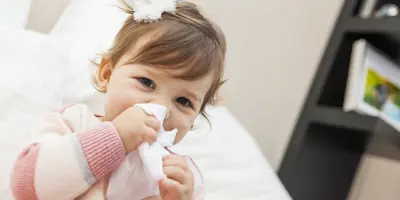5 people found this helpful
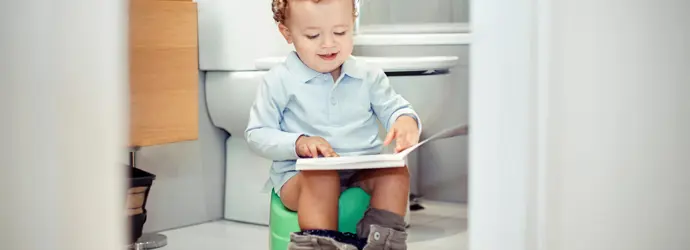
There are many similarities when it comes to potty training boys and girls, but it's worth knowing a few top tips for potty training a boy specifically. Once you know the essentials of how to potty train a boy, making that transition from nappies will be an exciting and stress-free step for both of you.
What's the difference between potty-training boys and girls?
The key difference between how to potty train a boy versus how to potty train kids generally, is teaching him to urinate standing up. One of the most useful potty-training tips for boys is to have a male role model for him to copy, because toddlers tend to learn by imitation. It helps if he can watch his daddy, an older brother, or another trusted man use the toilet, so he can see how it differs from when mummy goes.
When to start potty training boys
There isn't exactly a 'best age' to potty train a boy. As with most aspects of child development, the timeline is specific to each individual. It can vary widely too, with some boys ready at 18 months and others preferring to wait until they're four. It's worth noting, though, that boys typically stay in nappies a few months longer than girls.
Once everyone's on board with the fact that there's really no answer to what age to potty train a boy, you can simply keep a look out for signs your boy is ready to potty train. These might include -
- Your son him knowing when his nappy is wet or dirty
- knowing when he's passing urine and telling you
- At a later stage, your son knowing when he needs to urinate and telling you in advance
One of the top tips for potty training a boy is not to rush into it - it'll save you both stress if you wait until he's ready.
To find out more about the best time to start, visit our article on the right age to potty train.
Equipment needed when potty training boys
If you're wondering how to potty train a boy, you're probably thinking about what to buy. We recommend buying a child-size potty, which is less intimidating for a toddler than starting potty-training on a full size toilet, and it’s important that your son is able to lean forward on it while keeping his feet on the ground. It’s also a good idea to invest in a little stool to go with it, so that he can get on and off easily.
Having potties both upstairs and downstairs is useful, so he knows there's never far to go. Let your toddler be involved in choosing his potty so that it feels like his own, and so that he gets excited about sitting on his new seat.
Finally, help make learning to use the potty a pleasant experience by stocking up on loo roll that is soft and strong, like Cushelle.
So how do I start? Potty training tips for boys
The key to knowing how to start potty training a boy is to make it as positive and relaxed as possible. Stay calm if he has any accidents and praise him when he tries -older siblings can help with this too. Potty-training kids are never too young to learn good hygiene practices; if he always washes his hands after using the potty, he'll be in a good routine for when he starts using the toilet and urinating standing up.
Start by having your son learn to sit down on the potty first, as it’s much less technically difficult and requires less concentration. Avoid letting him get distracted or making him sit still for too long, as this could lead to him losing interest.
Once your toddler has mastered sitting down on the potty, have him try standing up. This is when it’s handy for him to have a male role model to imitate.
Get him comfortable with the potty
Even after your toddler has picked out his potty, the idea of actually using it can still be intimidating. One trick to get him used to his new seat is by personalising it with stickers and his own name.
If potty training a particularly stubborn boy, it’s best to start slowly. First, ask him to try sitting fully clothed. After he’s practiced this for a few days, move on to sitting with pants down. Try not to pressure him if he pushes back, but let him take it at his own pace.
Another great potty training tip to ease your son in is, if he has a favourite toy or doll, use it to demonstrate going through the process. You can even make a mini-potty with him for the toy, fashioned out of empty loo roll cores!. Seeing something that your toddler has a strong attachment to using the potty will show him how safe and easy it is.
Go shopping for “real”underwear
One of the best ways to potty train boys is to get your son excited about moving away from nappies. A great way to do this is to take him on a special underwear-shopping outing–once he understand she can choose his favourite pants, and gets to wear “real”underwear like a grown up, he’ll probably be as eager as you are to leave the nappies behind.
If your toddler is anxious about making the switch to underwear, try suggesting he wear them over his nappies at first to get used to them.
Celebrate victories with rewards
Whenever your son has a victory, however small, make sure to keep showing him he’s making progress. Remember to keep praising his efforts to prevent him from getting discouraged –if this does happen, or you can sense him losing interest, try offering rewards to help him persevere.
Potty training charts are one very popular motivational tool. Keep track of successes by offering him a sticker every time he manages to go. When he earns a certain number of stickers, these can add up to a special treat, such as sweets or a new toy.
Help make learning to use the potty a pleasant experience by stocking up on loo roll that is soft and strong, like Cushelle 50% longer lasting toilet rolls.
Things to remember when potty training boys
Once boys have learned to urinate standing up, they might not want to sit on the potty or toilet again. They might then forget to sit down at all, and that can lead to constipation. One of the most important potty-training tips for boys is to make sure he sits on the potty every day.
With these top tips for potty training a boy under your belt, you'll be ready to face this exciting new stage of development together. Remember to prepare in advance by stocking up on the right toilet paper to make your child’s potty training adventure a fun journey for both of you. And be sure to use flushable toilet wipes, for that extra clean feeling.
For more info on the potty-to-toilet transition, or how and when to do potty training, why not check out our other parenting tips?
Related articles
How to potty train at night: 5 tips for night-time potty training
With these 5 tips on how to potty train at night your little one will soon be dry and you can wave goodbye to middle-of-the-night nappy changes. Click for more.
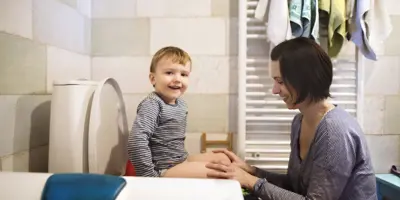
The potty-to-toilet transition: 7 essential toilet training tips
Do you think your child is ready to make the transition from potty to toilet? Read this guide for toilet training tips from the experts at Cushelle.
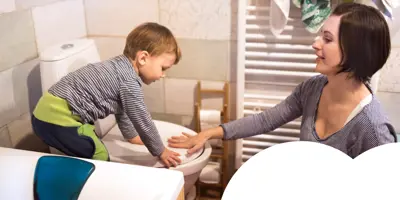
How (and When) to Do Potty Training
Potty training can be tricky, but a little patience and some smart parenting tricks can make all the difference. Find out how to potty train kids here!

What's the Right Age to Start Potty Training?
Is there a 'good' age to potty train? Cushelle answers all your questions about how to know when your child is at potty-training age. Click for more.

6 personal hygiene rules for kids
What do your kids need to know about personal hygiene? Read on for six important personal hygiene tips for kids, and how to make learning them fun.
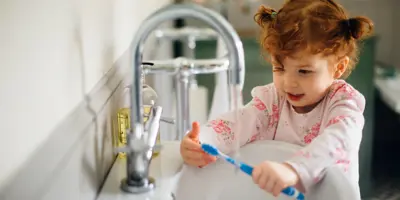
7 things that help with your baby's stuffy nose
Learn swtechniques to help clear a newborn’s blocked nose. Find over-the-counter options, plus baby blocked nose home remedy treatments, here.
